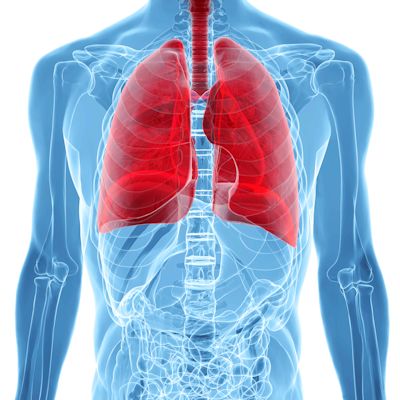 Sarcoidosis is a rare disease that causes inflammation, or small lumps called granulomas, in different areas of the body. The granulomas generally heal and disappear on their own. Sarcoidosis isn’t a cancer or a contagious disease — though in some cases it seems to run in families. However, more and more people have been diagnosed with it in recent years, so in 2008 Congress designated April as National Sarcoidosis Awareness Month to bring more attention to the disease.
Sarcoidosis is a rare disease that causes inflammation, or small lumps called granulomas, in different areas of the body. The granulomas generally heal and disappear on their own. Sarcoidosis isn’t a cancer or a contagious disease — though in some cases it seems to run in families. However, more and more people have been diagnosed with it in recent years, so in 2008 Congress designated April as National Sarcoidosis Awareness Month to bring more attention to the disease.
The exact cause of sarcoidosis is unknown, though doctors believe that exposure to some still unidentified trigger “turns on” a patient’s immune system in a way that creates granulomas. It usually develops between 20 and 40 years of age, and almost 90 percent of sarcoidosis cases are found in the lungs and lymph nodes, though it can occur in almost any organ.
What are the symptoms of sarcoidosis?
“Most sarcoidosis patients do not have any symptoms and probably are unaware they have the disease,” said Lindsey Roenigk, MD, a board-certified pulmonologist with West Georgia Lung and Sleep Medicine in Carrollton and a member of the medical staff at Tanner Health System. “However, pulmonary sarcoidosis can cause loss of lung volume — that is, the amount of air the lungs can hold — and abnormal lung stiffness. Pulmonary sarcoidosis also can develop into pulmonary fibrosis, which distorts the structure of the lungs and can interfere with breathing.”
According to Dr. Roenigk, the most common symptoms may include:
- Shortness of breath
- Cough that will not go away
- Wheezing
- Skin rashes on face, arms or shins
- Inflammation of the eyes
- Weight loss
- Fatigue
- Night sweats
- Fever
- Pain in the chest, joints and bones
- Swollen lymph nodes
Who is at risk for sarcoidosis?
Sarcoidosis occurs in all races and both genders, but the most susceptible populations seem to be of African-American, Scandinavian or Asian origin.
Diagnosis of sarcoidosis
According to Dr. Roenigk, the symptoms of sarcoidosis may resemble other conditions or medical problems, so anyone who thinks they might have it should consult their doctor for a diagnosis. Diagnostic procedures may include a chest X-ray, pulmonary function tests, blood tests, a bronchoscopy (in which a long, thin, flexible tube with a light at the end is put into the lung, allowing the doctor to look at the tissue lining the air passageways) or a biopsy.
Sarcoidosis is usually diagnosed by elimination. That is, other lung disorders that have similar symptoms are progressively eliminated, leading to a diagnosis of sarcoidosis.
Treatment for sarcoidosis
Specific treatment is usually determined based on:
- Patient’s age, overall health and medical history
- Extent of the disease
- Patient’s tolerance for specific medications, procedures or therapies
- Expectations for the course of the disease
“Different treatments work better for different people,” said Dr. Roenigk. “Sometimes more than one treatment is used, and in some cases, no treatment is needed. Most medications used to treat sarcoidosis suppress the immune system. Although sarcoidosis usually goes away by itself within two years, some people's lives are forever altered by the disease—particularly if it causes organ damage.”
Dr. Roenigk is board-certified in pulmonary medicine, internal medicine and sleep medicine with West Georgia Lung and Sleep Medicine. More information about her practice is available online at www.westgeorgialung.com.